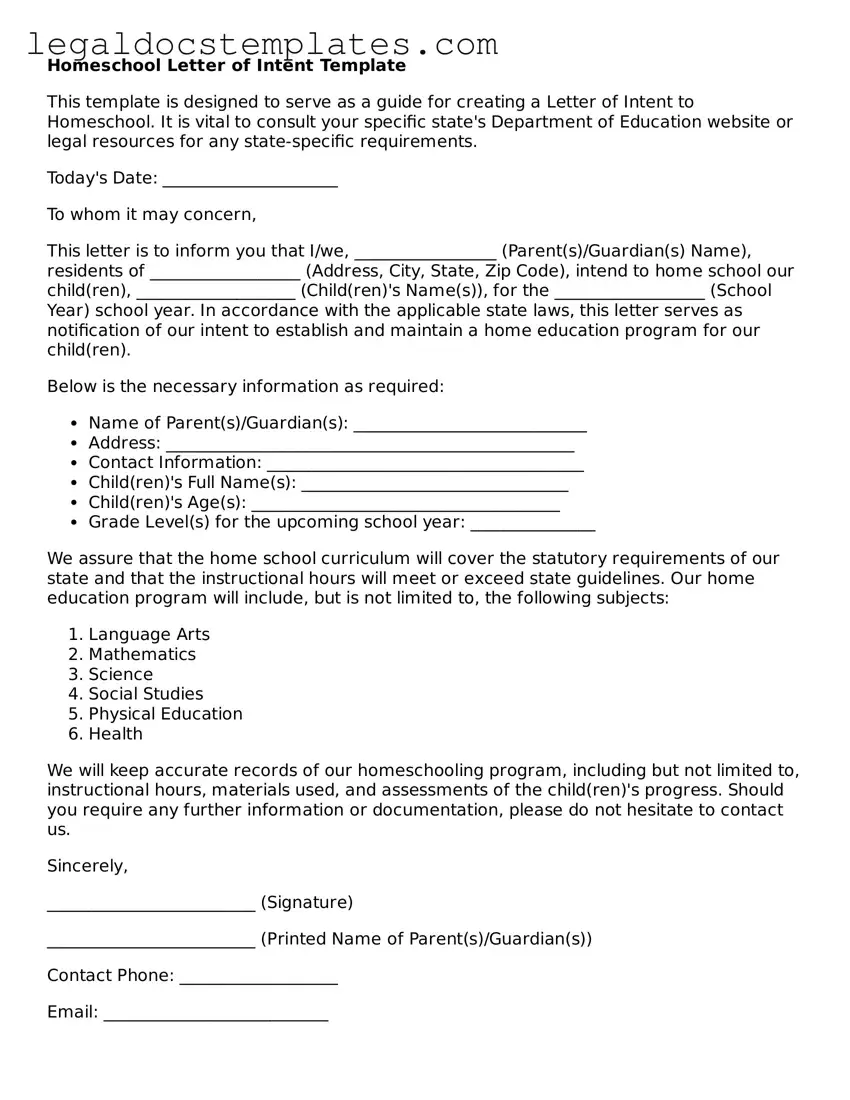Homeschool Letter of Intent Template
This template is designed to serve as a guide for creating a Letter of Intent to Homeschool. It is vital to consult your specific state's Department of Education website or legal resources for any state-specific requirements.
Today's Date: _____________________
To whom it may concern,
This letter is to inform you that I/we, _________________ (Parent(s)/Guardian(s) Name), residents of __________________ (Address, City, State, Zip Code), intend to home school our child(ren), ___________________ (Child(ren)'s Name(s)), for the __________________ (School Year) school year. In accordance with the applicable state laws, this letter serves as notification of our intent to establish and maintain a home education program for our child(ren).
Below is the necessary information as required:
- Name of Parent(s)/Guardian(s): ____________________________
- Address: _________________________________________________
- Contact Information: ______________________________________
- Child(ren)'s Full Name(s): ________________________________
- Child(ren)'s Age(s): _____________________________________
- Grade Level(s) for the upcoming school year: _______________
We assure that the home school curriculum will cover the statutory requirements of our state and that the instructional hours will meet or exceed state guidelines. Our home education program will include, but is not limited to, the following subjects:
- Language Arts
- Mathematics
- Science
- Social Studies
- Physical Education
- Health
We will keep accurate records of our homeschooling program, including but not limited to, instructional hours, materials used, and assessments of the child(ren)'s progress. Should you require any further information or documentation, please do not hesitate to contact us.
Sincerely,
_________________________ (Signature)
_________________________ (Printed Name of Parent(s)/Guardian(s))
Contact Phone: ___________________
Email: ___________________________
